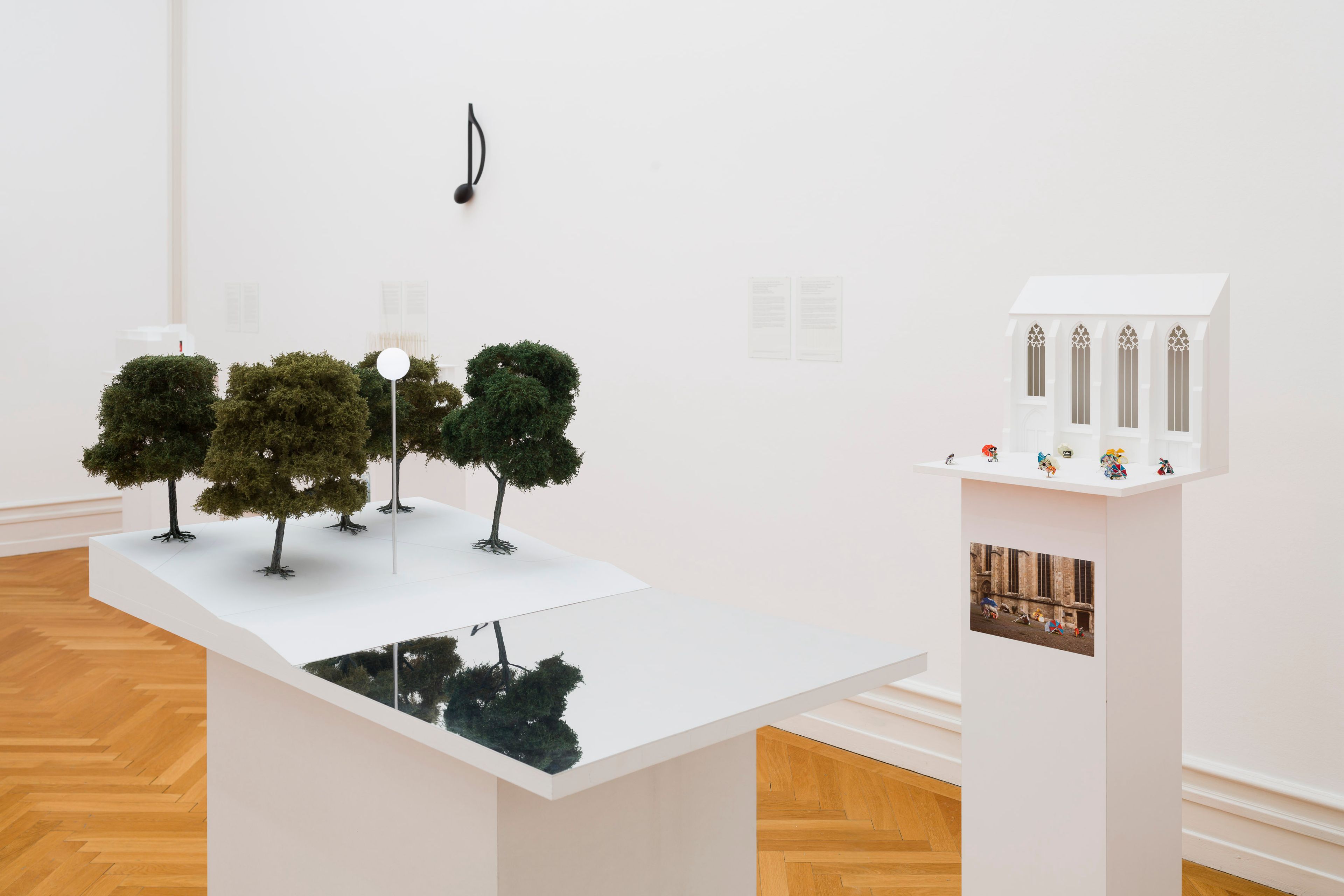Kunsthalle Bern, Bern, Switzerland
February 23, 2019–April 28, 2019
A major solo exhibition of works by Isa Genzken at Kunsthalle Bern in Switzerland focuses on the architectural models for the artist’s outdoor projects, shown alongside related video works, sculptures, and paintings.
Responding loosely to the legacies of constructivism and minimalism, Genzken’s work engages with everyday material culture, including design, consumer goods, the media, and urban environments, to explore how contemporary aesthetic styles embody political and social ideologies. The eclectic, pioneering sculpture for which she is best known is often created in dialogue with architecture, in particular the legacy of modernism and the rise of corporate buildings in cities in the postwar period.
Included in the exhibition at Kunsthalle Bern are a number of models for important works of public art—both realized and unrealized—such as the large-scale flower sculptures Two Orchids, which was displayed in New York’s Central Park in 2016, and Ohr (Ear), a photograph of an ear that was printed on a large scale and installed on the side of the City Hall in Innsbruck, Austria, in 2002. Mimicking conventional architectural models with the artist’s public works affixed to or staged near them as a proposal, these works "attest to Genzken’s passionate involvement with architecture and her delight at working with the contracted space of the architectural model," as Yve-Alain Bois writes. Although they have formed a part of the artist’s practice since the mid-1980s, these works were not shown publicly until the 56th Venice Biennale in 2015, when examples were included in the Central Pavilion exhibition curated by Okwui Enwezor. The following year, the solo exhibition Modelle für Außenprojekte at the Bundeskunsthalle Bonn marked the first focused presentation of these sculptures. "The models … unleash a surprising sculptural power," Peter Lodermeyer wrote in a review for Sculpture magazine; "Such aesthetic completeness negates any assumption that a model-like portrayal of large-scale, and in some instances, gigantic, formats necessarily results in something dry and didactic.… They influence the viewer’s imagination immensely by contrasting context—elegantly abstracted portrayals of the environment kept to a neutral white—and the sculptures themselves—exactly rendered miniatures, highly detailed in terms of color and material effect."
This year, Genzken will be awarded the annual Nasher Prize by the Nasher Sculpture Center in Dallas.
